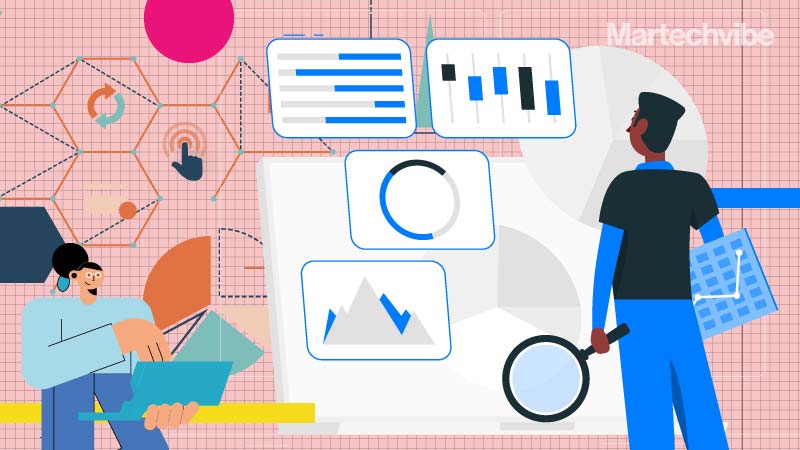How Data Can Help Marketers Make Smart Decisions In The Retail Industry
The retailers – both offline and online are adopting the data-first strategy towards understanding the buying behaviour of their customers, mapping them to products, and planning marketing strategies to sell their products to register increased profits. The impact of data on decision-making in the retail industry can’t be overstated. In the past, knowledge about their […]
Topics

The retailers – both offline and online are adopting the data-first strategy towards understanding the buying behaviour of their customers, mapping them to products, and planning marketing strategies to sell their products to register increased profits.
The impact of data on decision-making in the retail industry can’t be overstated. In the past, knowledge about their stores’ performance relied heavily on same-store sales — comparing a store’s sales current year to its previous year – and other results such as weekend sales and the performance of a display.
Now, in addition to those results, modern retail marketers have at their disposal real-time data sets such as customer metrics, customer relationship management (CRM) data, market trends and pricing trends, all realised through cloud computing and big-data analytics systems.
The new data sets and the old enable retailers to make faster decisions and gain instant insights from national and regional performance down to individual stores and postal codes.
Good enough, move on with more and better data
Real-time big data analytics not only provides insights for improved retail decision-making but also changes the process.
Earlier, retail marketers would spend a lot of time collecting data, organising and aligning it to achieve a target accuracy level, and then make decisions.
Now, retail marketers have the luxury of taking a GEMO (good enough, move on) approach. Since data refreshes in real-time, the GEMO approach is good enough and takes much less time than poring over data to make decisions.
Rather than waiting a month or a quarter for new data to inform decisions, retail marketers now wait a week or a day to review fresh data and revise decisions as needed.
Big-data allows retail marketers to make decisions faster and better than ever before.
Personalisation
Personalisation and the programmatic targeting accompanying it are two of the most important current examples of data helping retail marketers make smart decisions and influence a consumer’s purchase decision. Personalisation allows retail marketers to target a possible customer and influence their decision-making on the path to purchase. Big-data analytics combined with marketing strategy, smartphones, GPS, geolocation, and ring-fencing comprise a retail-marketing toolbox that reaches far beyond coupons in the Sunday newspaper.
Customer data and consumer technology combined with marketing strategy enable retail marketers to decide, for example, whether to display an advertisement for their offering while a potential customer is viewing a competitor’s product.
Market insights
Another way marketers can use data to make smart decisions in the retail industry is by leveraging third-party data sets that track consumer behaviour and show where they’ve opted in and what they purchased.
Such data sets also go beyond a retailer’s customers and measure the overall dynamics of a market. Since the data are independent of any retailer, they’re like a market mirror that doesn’t necessarily display what the marketer sees or wants to see. For example, a marketer may profile a customer as a heavy spender when that customer spends more on competitive products.
That marketer’s internal data may show sales growth at 12 per cent per year, but third-party data reveals overall market growth is only eight per cent per year. So the marketer’s company is losing share, although it’s increasing sales.
Third-party data can also reveal retailers’ and manufacturers’ overall standing in terms of sales, the number of items sold, geographic reach and distribution, and customer demographics.
Now that retailers have access to powerful platforms to ingest third-party data, they can better use it to their advantage to be ever more adaptive and precise in terms of pricing, the timing of promotions and markdowns, and creating an assortment that’s more relevant to local geography or market than a national assortment.
They can immediately learn what’s selling in any region and quickly tailor their assortments accordingly.
Feedback on new initiatives
Data also helps retail marketers explore and evaluate new ways of selling. For example, one retailer just announced a new clothing sales model where they display only one size of each item on the floor.
The customer selects the item and proceeds to a changing room with a virtual mirror. The mirror estimates the customer’s size and displays an image of that item in that size on the customer, who either accepts or edits the size.
Whichever size the customer selects is delivered from the back of the store to the customer. That retail marketer certainly will use point-of-sale and demographic data to evaluate the success of the new sales model and whether to expand it to other stores and regions.
Perhaps the most interesting aspects of how data helps retail marketers make smart decisions are unknown.
Technology and marketing innovations such as big data analytics and personalisation are still in their infancy and, undoubtedly, have an interesting journey ahead.
If you liked reading this, you might like our other stories
Is Data The Key To Customer Conversion And Acquisition?
Can CDPs Break Data Silos?






